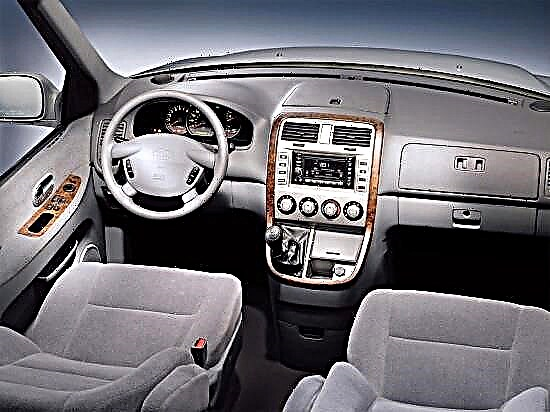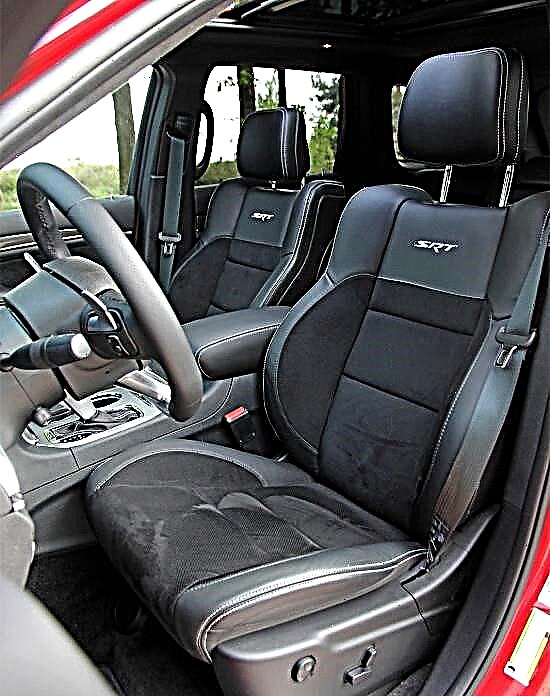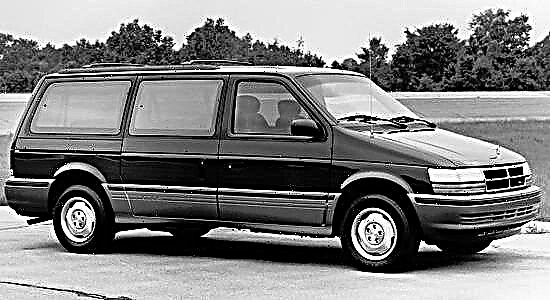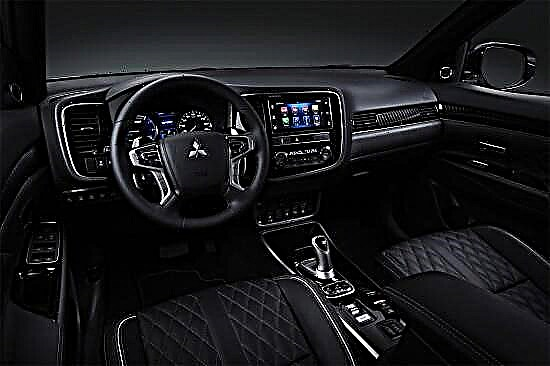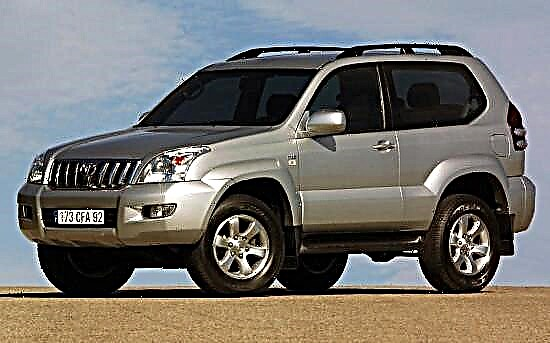Few cars can boast of continued demand in the secondary market several years after the end of production. There are even fewer models that have earned the universal love of drivers from the CIS countries as much as Toyota Land Cruiser Prado 120 uses it - a comfortable SUV in Japanese traditions.
Even more than 5 years later, since the fourth generation of "Pradiks" appeared, it is possible to contemplate the "120th" in the oncoming lane almost more often than any of the representatives of this popular line of SUVs. Is it “habitual” Russian respect for Japanese quality or an objective assessment of a specific model? In any case, this "not new, but revered" car is worthy of attention - the saying "the old horse does not spoil the furrow" really fits.

The Land Cruiser 120-series model became the third generation of the Prado line, released from the hands of the engineers of the Toyota concern. In Russia, the previous branch of this "Japanese family" was well known, so they knew in absentia and with the renovation, which explains the increased demand. However, having surrendered its position as an "all-terrain vehicle" and appeared to be a "city dweller", the second generation ("Prado 90") significantly disappointed conservative motorists (otherwise the excitement with the appearance of the 120th series would have been inevitable, at least in Russia) ...
However, from 2002 to 2009 (until the complete cessation of the production of this model), the Land Cruiser Prado 120 met almost more often than other foreign cars in the city traffic, giving rise to a feeling of "mass enthusiasm".
Outwardly, the hero of our review is not far from his predecessor. The appearance of all Pradiks, starting from the second generation, is similar - a “heavy and authoritative” car, stylish, with rounded smooth lines, not aggressive, as if having forgotten its belonging to the class of “all-terrain vehicles” and proudly called a “prestigious off-road vehicle”.
The front optics, apparently, serves this: huge "triangular" headlights go over the hood, giving a somewhat refined and elegant look.
Around the perimeter of the Toyota Land Cruiser Prado 120 are plastic inflated linings and wheel arch extensions, giving the car a modern and urban look, and wide bumpers speak of the possibility of conquering off-road. True, this impression is canceled out by a footboard - clearly an option not for an "all-terrain vehicle".

The spare wheel (in the European version) has moved under the bottom of the car, which once again confirms the reputation of the 120-series as a "city dweller" (to remove the spare wheel, you have to manipulate a special tool and the rear bumper, as a result of which the wheel will drop on the chain).

The interior cannot be called "ascetic in Japanese traditions" any more. The European studio "ED2" worked on the design, so from the inside our "urban SUV" does not look "Asian" at all.

The seats are velor or leather, the plastic is soft on the dashboard, the instrument dials are easy to read. In the extended configuration, the instrument cluster is optitronic.
Separately, it should be said about the build quality: here the Japanese have already shown the highest level, perfectly fitting the interior details, so that when driving, unnecessary annoying sounds are not expected at all. In addition, the sound insulation is at a more than decent level ... So the overall comfort in the cabin of the 120th Land Cruiser Prado is beyond doubt (and in particular, it depends on the configuration).
The third generation of Toyota Land Cruiser Prado 120 was originally offered in two body styles: three-door and five-door. Naturally, the owner of the "three doors" was smaller - its wheelbase was about 2.5 m (versus 2.8 m for the five-door version). For compactness I had to pay with a "small" trunk (430 ~ 1150 liters) and inconvenience of access to the rear passenger row.

But the impressive "Prado 120 with five doors" could be, depending on the configuration, even eight, and its trunk has a capacity of 620 ~ 1850 liters (depending on the configuration of the cabin).
Mainly, a five-door, five-seater version was supplied to Russia (the demand for an additional row was small - those wishing to travel in a large company chose (and are choosing) minivans). Our fellow citizens, in most cases, chose one of two complete sets: the basic version was called "Luna", the extended version was called "Sol". Both found their fans, although the difference in cost at the time of official sales was about seven thousand dollars.
- In the minimum configuration "Luna" everything is "Spartan", but neat in a European way. The salon is upholstered in velor, the front seats have two positions, climate control is also exclusively for the driver and passenger side by side. The basic version is equipped with two airbags. The audio system includes 9 speakers and a CD changer.
- Option "Sol" (maximum configuration) is much more gorgeous. Leather interior, there is an electric drive for the front seats, an additional climate control unit for rear passengers, side airbags. The extended version also assumes the presence of a rear air suspension adjustable in three positions, headlight washers, parking sensors, roof rails, as well as, at the request of the owner, a third row of seats.
Speaking about the technical characteristics - under the hood of the Prado 120 model there were four variants of gasoline engines, atmospheric diesel and turbodiesel. On our roads, you can most often find a 2.7-liter four-cylinder petrol (minimum configuration), a 4-liter V-six, as well as a 3-liter D-4D turbo diesel. Regarding the latter, it is worth mentioning that it was not officially supplied to Russia and the CIS countries, since it could not prove itself in our conditions of changing temperatures, off-road conditions, intensive use and low-quality fuel.

The third generation of the Land Cruiser Prado, depending on the power plant, was equipped with a five-speed "mechanics" or a four- / five-speed "automatic".
Cars supplied to Europe had permanent all-wheel drive, while in the UAE they were plug-in.
The front suspension is independent in all variations, the rear semi-independent is a classic version of the Japanese SUV.
As for the "all-terrain" characteristics of the 120th "TLC Prado", they, as already mentioned, are no longer as brilliant (as in their predecessor). Technically, this car is capable of a lot and is positioned as a "off-road conqueror" ... yes - it can overcome ice, snow, sand and soggy clay on its own ... however: low landing, long overhangs, increased base, additional (decorative) body elements - they say " preferred choice in favor of the highway. "
What do we have, bypassing the Toyota Land Cruiser Prado 120 from all sides? A high-quality Japanese car of a remarkable assembly with a European interior design, comfortable, obedient, with a reliable engine (if a gasoline engine is chosen) for our conditions ... In the maximum equipment version, it is practically "executive class", impressive appearance, good roominess - solid pluses. And the purpose of the model can be defined as universal: entertainment trips, country trips, business trips, movement along city streets - everything is fully covered. But the harsh Russian off-road may turn out to be too tough for this "city dweller": if it passes it, then with significant losses ...
However, among the fans of this car there are not so many fans of "extreme", but they buy it in the secondary market even today, paying tribute to: Japanese quality, status-forming characteristics and an attractive price (by the way, in 2017 you can buy it in Russia at a price of 1.0 ~ 1.6 million rubles - depending on the condition and equipment).



